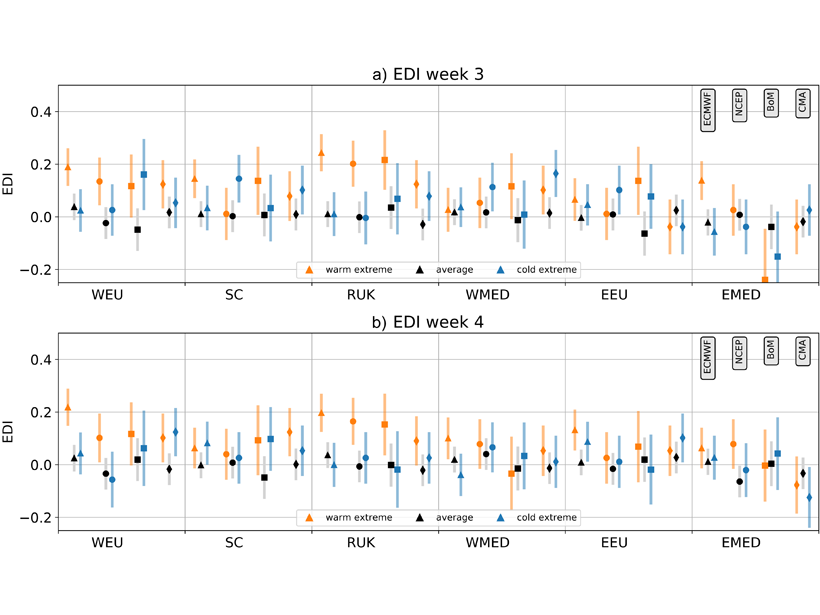Source: Geophysical Research Letters
Predictions about the general character of a season—hotter or colder, wetter or drier than usual—are useful for a variety of applications. Despite decades of research and implementation of models that have otherwise led to quantifiable improvements, these predictions, which are made a few seasons to a month in advance, are still too poor in midlatitudes to be considered useful for most decisions; in other words, their skill is low.
In recent years, a community effort to bridge between the time scales typical of weather forecasts and those of seasonal predictions, resting on advances in computing power, has opened up the way to make predictions one to four weeks in advance. This new class of predictions is called “subseasonal to seasonal” (S2S).
Wulff and Domeisen [2019] investigate the skill of S2S predictions over Europe from four leading centers worldwide. Intriguingly, they find that summer heat waves are more predictable over most regions of Europe compared to spells of normal or cold weather. In other words, heat waves such as those experienced this past summer could be better anticipated than typical average or cold climate events.
This result is of scientific and general interest. Not only does it justify the community and computing investment put into S2S, but it also gives hope that societal expectation for relevant and timely information may be met with current systems.
Citation: Wulff, C. O., & Domeisen, D. I. V. [2019]. Higher subseasonal predictability of extreme hot European summer temperatures as compared to average summers. Geophysical Research Letters, 46. https://doi.org/10.1029/2019GL084314
—Alessandra Giannini, Editor, Geophysical Research Letters
Text © 2019. The authors. CC BY-NC-ND 3.0
Except where otherwise noted, images are subject to copyright. Any reuse without express permission from the copyright owner is prohibited.

